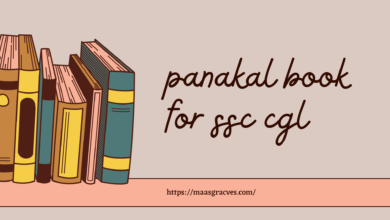Your Topics Multiple Stories Strategy 2025 – What The Masters Won’t Tell You

In today’s fast-moving media environment, it’s not one-size-fits-all. With the changing audience demand, content producers are interested in more novel ways of engaging their audience. One very effective one is the “Your Topics Multiple Stories” technique, where the single topic is dissected into several stories giving an active and a multi-dimensional viewpoint. It not only connects with different audience sections but also makes the content game strong as per the standard of time. Here’s how to pull away from the drawing board and combine stories to produce compelling, diverse, and informative content.
What is “Your Topics Multiple Stories”?
At its best, “Your Topics Multiple Stories” is a content approach to a topic or theme, approached in the disparate, nuanced ways in which people experience it. Consider it like telling one story, only from any number of other viewpoints — each layer of the story shedding a different kind of light, whether it be a personal anecdote, expert opinion, statistical insight or speculative thought exercise.
The sheer power of this strategy is that it can appeal to all audiences. So whether you’re a company wanting to connect with a variety of customer audiences or a content creator looking for greater interaction, there is truly something in it for everyone when you employ this tactic.
Why is it Important?
In an age of customized content, it is variety and richness that people desire. Contrary to regular storytelling in which it is based on a single story, subsisting several stories makes you get out of the doldrums of one story. Here’s why it matters:
Enhanced Engagement
By giving multiple voices on a single subject – you are allowing your audience to find the one which affects them the most. This variation helps to maintain interest and maximises the opportunity of your content being shared as readers from a diverse range of backgrounds will relate to a diverse range of experiences.
Better SEO Results
Google’s search algorithm appreciates content that is thorough on a topic. By having some more of the topics, that have already the same, you can naturally use more keywords in, which increases your SEO ranking. The more diverse the content, the more visible it is.
Broader Audience Reach
Different people like to consume content in different ways.” Some like to read data-driven stories, while others enjoy good old fashioned story-telling or personal experiences. Organize your content by a different angle, and you will appeal to a broader range of readers.
How to Implement This Strategy
It may seem complicated, but the truth is, “Your Topics | Multiple Stories” is all about organization and creativity. Here’s how to get started:
Content Structuring
You should not have such a timorous stool for us to hang up this sentence on: your subject should have a distinct centre; but it must not be a viscous one, so that we may cut it up into quarters. Every paragraph should be about a different aspect of the topic. Suppose you are writing about sustainable fashion. You can approach it from:
- Environmental Sustainability: The article makes mention of the environmental implications of the fashion world.
- Social Responsibility: Discover how fair wages and human rights impact the labor force.
- Consumer Decisions: Explore how the choices we make when we shop affect sustainability.
Each of these sub-stories relates to the central story but serves as an alternative means of delving into that world. This brings not only further depth but also greater entertainment!
Narrative Layering
A discreet angle for each segment or story, yet everything still ties into the central theme. ‘Layering your content’ is just another way of saying that every part has a specific voice or perspective. For instance, one section might be dominated by data, another by the personal anecdote and still another by opinion. This layering lets your content remain dynamic, appealing to various types of readers.
Real-Life Applications of Multiple Stories
And the multi-story strategy has been working for many industries looking for more engagement. Let’s look at a few examples:
News and Media
They are also pros when it comes to telling the same story from different angles. Consider a political event for instance. They might cover it with:
- A policy focused political analysis.
- A first person account from someone involved in the incident.
- History of things playing out in a similar manner.
This method gives more wholes and accessible insight into the event for a broad public.
Marketing and Branding
Brands work hard to bring in different segments of audience in many stories. For example, Nike doesn’t merely speak about shoes; they tell stories about athletes, personal obstacles, empowerment and cultural movements. Every story is for a different audience but comes back to their concept of performance and aspiration.
Education
It is a technique employed by educational systems to accommodate varied learning-style persons. Using videos, articles, case studies and interactive quizzes, a single subject area can be taught. This also helps learners understand the content in different angles, and better understand.
Outstanding) 38 Challenging Areas and Solutions
The multiple-story solution is great, but it’s not free.
Content Overload
With several stories, there is a danger of overburdening your audience. The trick is to achieve a balance between quality and quantity. Don’t just add the stories — add them for a reason. Every story needs to deliver value.
Maintaining Coherence
It is necessary that all the stories fit the main theme. Every story should deepen the main story’s understanding of itself, not muddy the waters. Regular editorial monitoring can help to keep consistent across the various sections.
Resource Management
Making many, many rounds requires more time and effort. You can prepare your content itself ahead of time focusing on manageable chunks of work. And don’t hesitate to use AI tools to help you come up with topics and create content calendars.
The Future of ‘Your Topics | Multiple Stories’
As content transitions, the appetite for more complex, nuanced storytelling will only increase. As the use of AI-driven personalisation and analytics increases, creators can offer an even more curated experience based entirely on the customer. The future of content will be multi-dimensional storytelling, where content is personalized to the viewer’s wants and needs.
Conclusion
Your Topics Multiple Stories is not a passing fad; it’s the next thing in content-generation. 4) Dive into subtopics So, let’s say you know what your theme is, but how can you provide a breadth of engaging narratives to attract a larger audience and elevate your SEO? If you are a brand, educator or content creator, this methodology ensures that your content remain fresh, relevant and significantly more engaging.
Begin experimenting with the multi-story rule today and see how your audience engagement blossoms!




